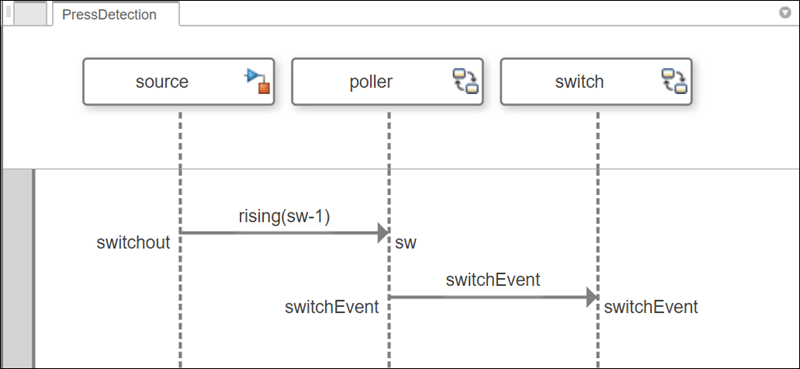systemcomposer.interaction.SeqFragment
Description
A SeqFragment object is a container for operands in a sequence
diagram that specifies the behavior of the contained elements.
A Seq Fragment represents that the messages in its operand are weakly sequenced. Weak sequencing is the default interpretation of messages on an interaction, so this fragment is often not explicitly required.
Weak sequencing means that the order of message events on a lifeline must be followed, but no ordering constraint exists between message events on different lifelines, except that for a given message, the send event occurs before the receive event.
A weak sequencing fragment is drawn as a box in the sequence diagram, with the label
Seq in the box header. The operand is then drawn within this box as a
separate section.
Creation
Access Fragment objects via the
RootFragment property of the corresponding systemcomposer.interaction.Interaction object. Access the
Operand property of the root fragment and then, if fragments are
within the root operand, access the Fragment property of the root
operand and iterate over it to view details about each of the fragments.
Properties
Object Functions
addOperand | Add operand to fragment |
move | Move fragment within interaction |
destroy | Remove model element |
Examples
More About
Version History
Introduced in R2024a
See Also
Tools
Functions
openViews|sim|addInteraction|getInteraction|getInteractions|open|addLifeline|addFragment|addOperand|addMessage|addDurationConstraint|addAnnotation|findLifeline|findElement|move|move|move|destroy|next|current|reset
Objects
systemcomposer.arch.Model|systemcomposer.interaction.Interaction|systemcomposer.interaction.Iterator|systemcomposer.interaction.Lifeline|systemcomposer.interaction.MessageEvent|systemcomposer.interaction.FormalGate|systemcomposer.interaction.Message|systemcomposer.interaction.Fragment|systemcomposer.interaction.Operand|systemcomposer.interaction.DurationConstraint|systemcomposer.interaction.Annotation

